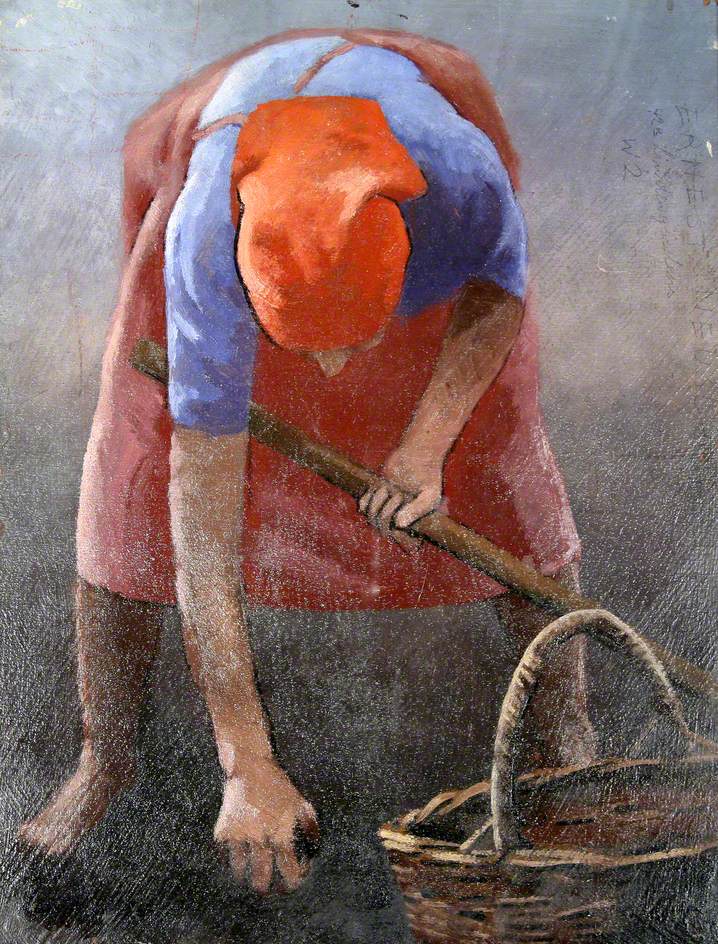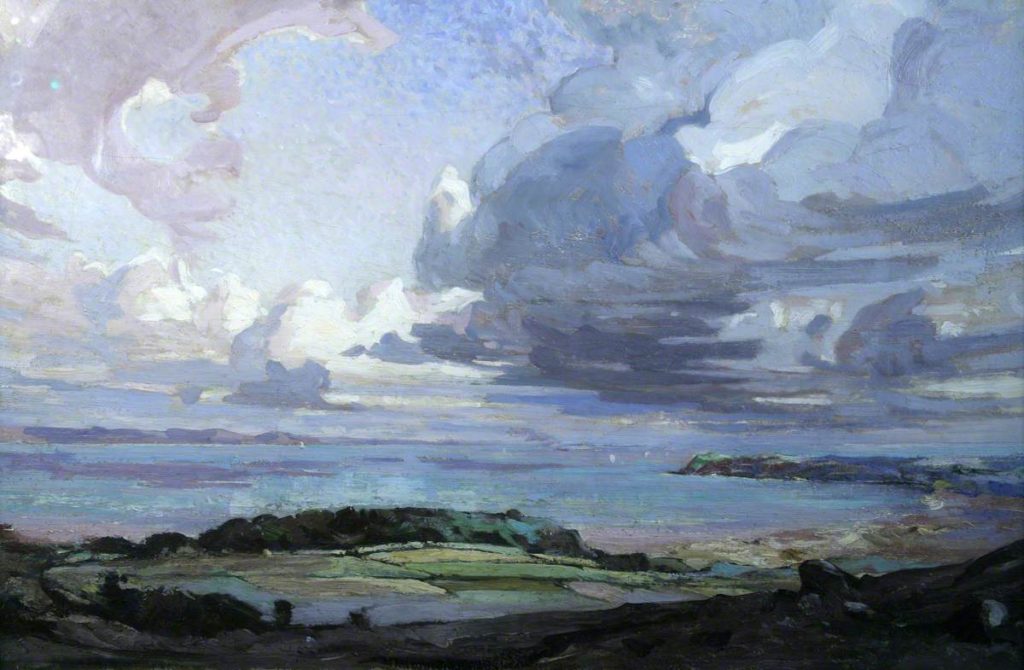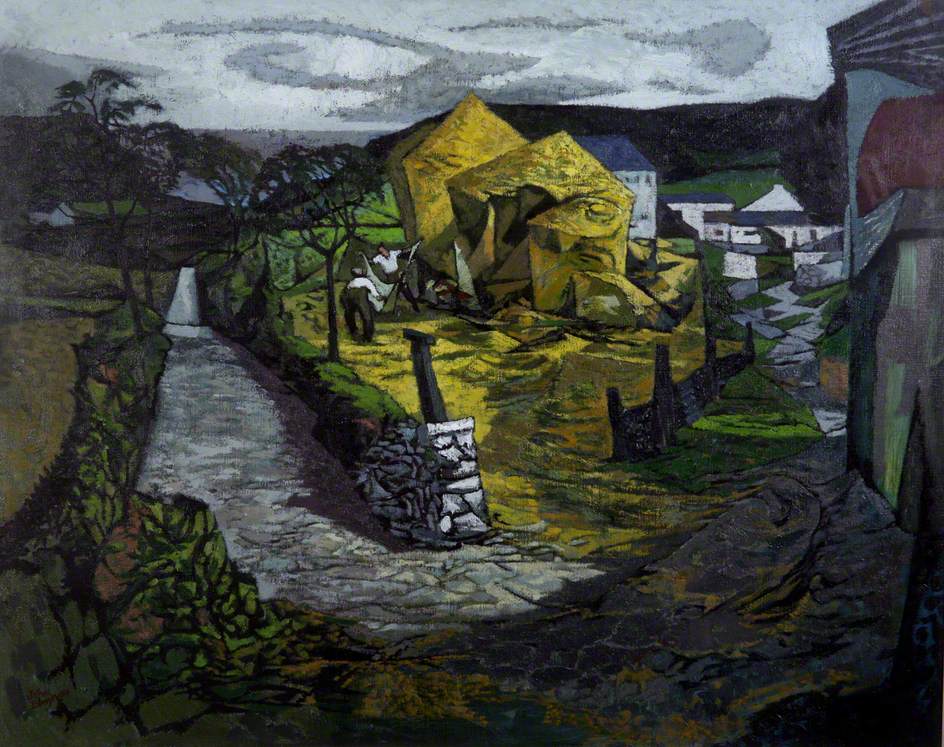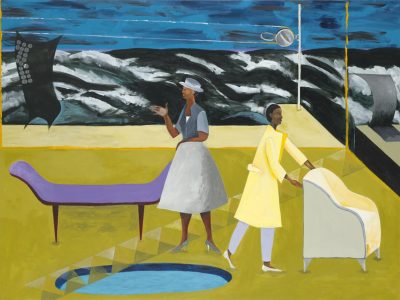Number 10 Museum in Residence: Glynn Vivian
Every year, the Government Art Collection showcases a museum or gallery collection from outside London in 10 Downing Street. This year, these works are from the Glynn Vivian Art Gallery in Swansea.
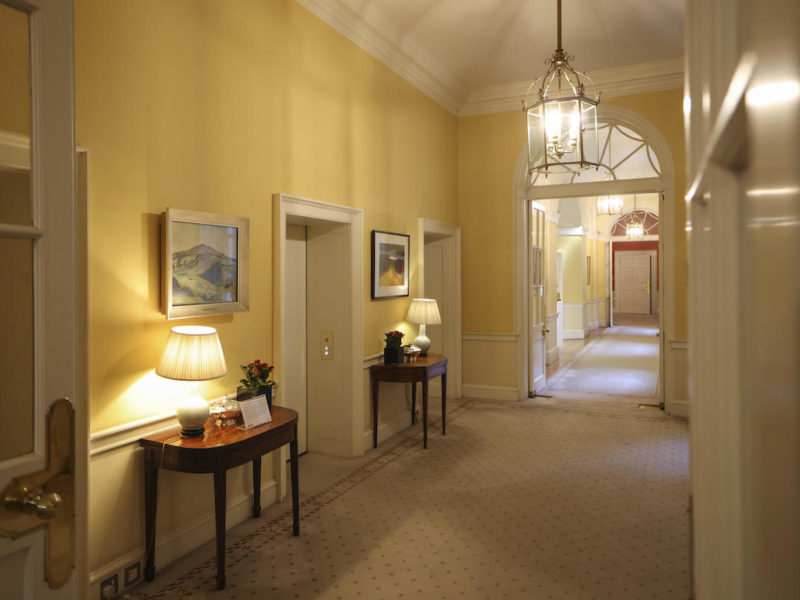
The Glynn Vivian display in 10 Downing Street. Picture by Simon Dawson / No 10 Downing Street.

The Glynn Vivian display in 10 Downing Street, including Ray Howard-Jones' (1903-1996) Seascape from Mumbles. Picture by Simon Dawson / No 10 Downing Street.
For this year’s Number 10 Museum in Residence, curators from the Government Art Collection worked with the Glynn Vivian Art Gallery to select ten works that celebrate its unique collection. The ten artworks chosen are paintings by artists from Swansea and South West Wales, and artists who spent time working in Gower and the surrounding area. Over the next year, these significant works from Glynn Vivian will be seen outside of Swansea and encountered by new audiences, including the staff and many visitors to 10 Downing Street.
Four of these key works in the Downing Street display are all portraits of women. They include paintings by émigré artists – Ernest Neuschul’s Cockle Picker and Josef Herman’s Mother and Child. Celebrated Welsh artists Ceri Richards and Gwen John are also prominent in the display, with their works conveying the experiences of a female pianist and a nun, respectively.
Dramatic scenes of Welsh landscapes feature in the Downing Street lobby, with works by Lucien Pissarro, William Grant Murray, Ray Howard-Jones, John Elwyn and Glenys Cour. These six works are each fine examples of the Glynn Vivian’s collection of 20th-century Welsh and contemporary art and bring the rolling landscapes of the South Wales Valley to the iconic building in Downing Street.
“It was a pleasure to work with the team at Government Art Collection to select these works which will be seen by many different people from the UK and all over the world.” — Karen MacKinnon, Curator, Glynn Vivian Art Gallery
See some of the works on display at 10 Downing Street
-
Ernst Neuschul, Untitled (Cockle Picker). © the artist's estate. Image: City & County of Swansea: Glynn Vivian Art Gallery Collection
Ernest Neuschul’s Untitled – Cockle Picker shows a barefooted woman holding a rake and bending over to pick cockles, which she is collecting in the basket we see in the foreground. Swansea and the South Wales coast have been synonymous with the cockle industry since Roman times. These small molluscs are a local delicacy, often steamed or served cold with plenty of malt vinegar and salt for an authentic taste of Wales.
-
Gwen John, The Nun, 1910s. Image: City & County of Swansea: Glynn Vivian Art Gallery Collection
Gwen John’s The Nun is one in a series of six paintings that all attempt to capture the essence of the artist’s idea of what a mother superior might represent.
-
William Grant Murray (1877–1950), Oxwich Bay. Image: City & County of Swansea: Glynn Vivian Art Gallery Collection
Above the fireplace in the Lobby in 10 Downing Street, Oxwich Bay by William Grant Murray gives the viewer a snapshot of a perfect summer’s day on Wales’s Gower Peninsula.
-
Lucien Pissarro, Cefn Bryn, Gower, 1933. Image: City & County of Swansea: Glynn Vivian Art Gallery Collection
Lucien Pissarro painted this view of Cefn Bryn from Pennard Castle during the summer of 1933. Invited to the area to recuperate following an operation by an old school friend of his wife Esther, the Pissarros became fascinated with the Gower Coast.
-
John Elwyn (1916–1997), Ydlan Yn Sir Aberteifi, 1954 © the artist's estate. Image: City & County of Swansea: Glynn Vivian Art Gallery Collection
John Elwyn’s Ydlan Yn Sir Aberteifi is a testimony to his undiminished love for Wales, presenting a peaceful, idealised vision of country life.
Explore more
Every year, the Government Art Collection showcases the collection of a gallery outside London in 10 Downing Street. This year’s display comes from the Laing Art Gallery in Newcastle.
Why does the Government have an art collection? What does it collect? Why is the Collection spread across the world?
There are so many ways to discover this unusual collection. Search for an artist, type in a capital city or be surprised by the loudest artwork is in the Government Art Collection!


